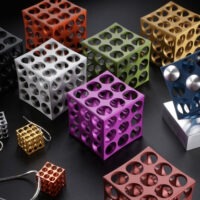Whenever you explore the great outdoors, chances are you want to disconnect from this highly connected, digital world. But sometimes, temptation kicks in and you just have to pull out your phone to see if the world hasn’t gone to hell since you last checked your Twitter feed,oh, 5-minutes ago.
Making sure your electronic devices are charged is a good thing, but ensuring they will stay forever charged, even while outdoors, is better.
Water-Powered Device Charger
The WaterLily was made especially for those who love the great outdoors but hate lugging various cables and bulky chargers. This portable turbine charges USB and 12v devices like phones, cameras, flashlights, and power banks, just to name a few.
As its name implies, the WaterLily draws its power from running water. Simply throw the turbine into a river, stream, or overboard if you’re on a boat, and watch as it charges your devices at the same rate as a home wall outlet.
You’ll need a minimum water flow speed of 0.7 mph to get any power from the turbine and a flow speed of 7.2 mph to get the maximum charge speed. Provided water is constantly flowing through it, the WaterLily generates up to 360-watt hours of power in a day.
When compared to 14w solar panels, this portable turbine is smaller, generates eight times more electricity, and is capable of charging at night (if it’s not swept away by the current).
This is all well and good if you’re near a moving body of water, but what if there isn’t one around? Thankfully, the WaterLily has two accessories which make it useful even outside of water:
It has a hand crank which turns it into a manual generator; letting you charge your devices like your forefathers did. All you need to do is unscrew the nose cone, attach the hand crank, and you’ll be charging your devices like 2006!
If manual labor isn’t your thing, the WaterLily can be fitted with large fins, effectively turning it into the aptly-named WindLily. Like the WaterLily, the WindLily needs a specified wind speed for it to generate any power. A wind speed of 7mph gets you minimum power, but if you want the maximum 23w charge, you’ll have to be in an area (or put it in a spot) where the winds hit 22mph.
As you may have guessed, the WaterLily and its attachments help reduce the amount of non-recyclable batteries needed to power your electronic devices. One WaterLily used the whole year round is enough to displace over 91 million AA batteries, which is a huge change considering how many of those batteries are produced and used each year.
There are two versions available, one for USB connection and one for 12v connection, with both costing $169.99. You can see the specs and get more details about the WaterLily and its features on the WaterLily webpage.










